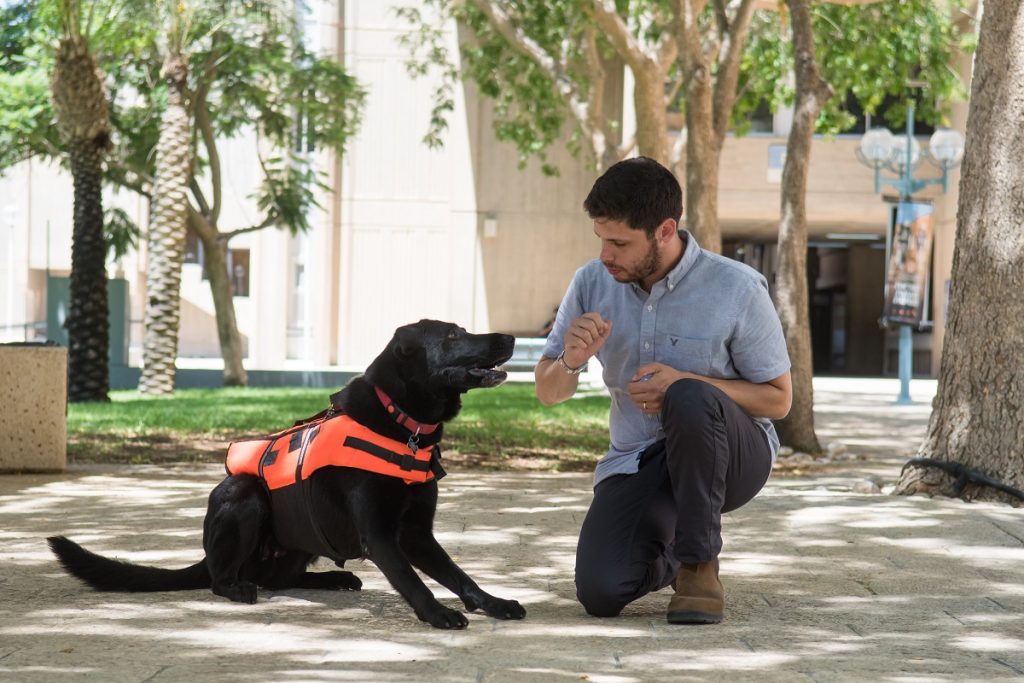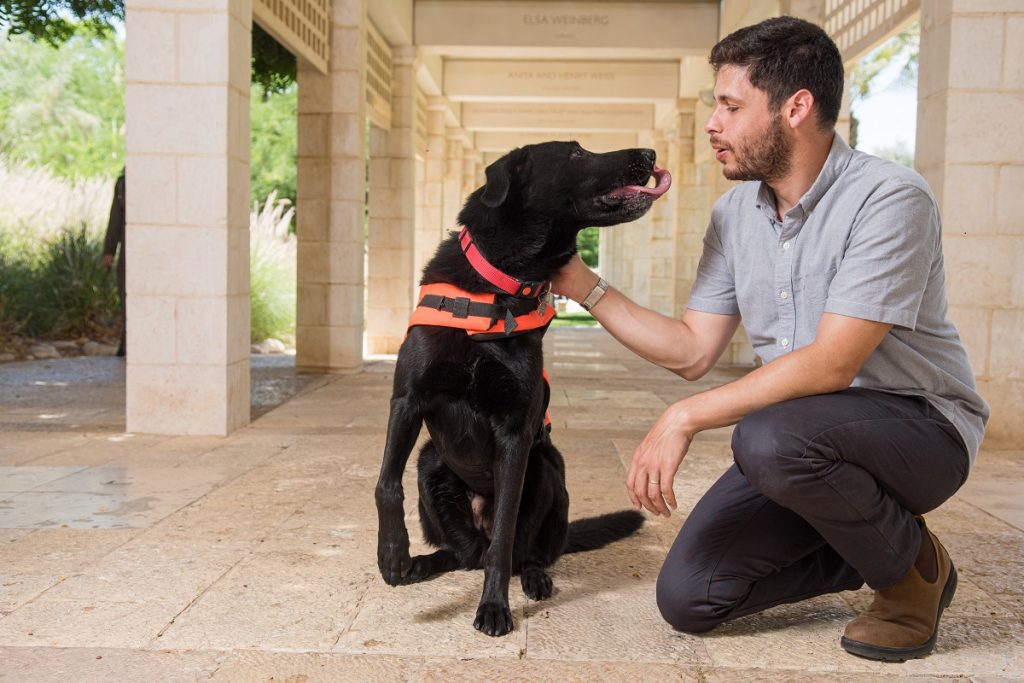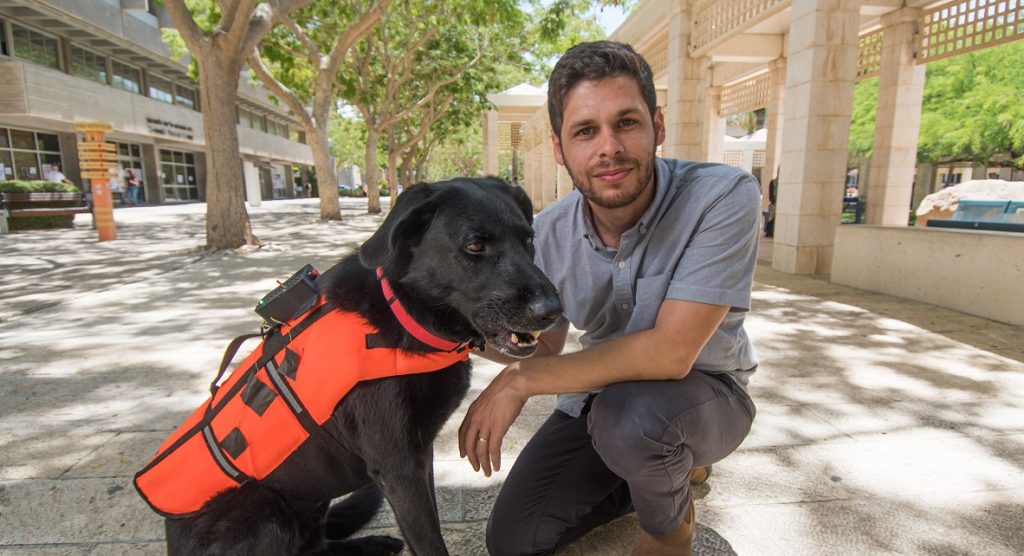Dogs are believed to be among the first domesticated animals, trotting alongside humans for as many as 40,000 years. Throughout the centuries, canine owners and handlers have trained their furry friends for various purposes: herding, tracking and hunting, detection, search and rescue, security, various assisting functions such as guiding, hearing, and seizure response, and simply for companionship.
The training traditionally centers on the dog learning to pick up on and obey commands and cues vocalized from an owner or handler. A new interdisciplinary research team at Ben-Gurion University of the Negev (BGU) in Israel has developed an entirely new way to train canines using haptic (related to the sense of touch) vibrations.
Haptic technology often conveys different types of sensations and cues in remote operations or computer simulations where a user cannot interact with and feel physical objects.
SEE ALSO: Cannabis For Animals? Israeli Research Underway To Win Over Global Pet Care Market
The team developed a modified mesh vest that incorporates haptic technology for the canines to wear. The vest contains four small, painless vibrating motors that operate via remote control. Yoav Golan, the lead author of the study and a Ph.D. candidate in mechanical engineering at BGU tells NoCamels that a dog wearing the vest will learn “to associate different vibrations with different commands…one vibration will cause the dog to turn around, while another will cause him to come to you,” for example.

Golan says the study, called “Vibrotactile Vest for Remote Human-Dog Communication,” was the first to explore haptic technology and dog commands. The findings were presented at the World Haptics Conference on July 12 in Tokyo, Japan, an international conference covering leading scientific findings, technological developments, algorithms, and applications in the field.
“Modern working dogs perform tasks ranging from search-and-rescue to bomb detection, but relatively little work has been done on the use of technology with working dogs. Therefore, communication with working dogs is still predominantly visual and audial,” the team writes in the study.
In certain situations, non-vocal communication is beneficial and even preferred, they point out, such as with military working dogs with which handlers may need discrete contact, or with search-and-rescue dogs working in rubble, at a distance, and maybe even out of sight.
The technology, they write, can also help with “reconnecting with run-away pets, communication by speech-impaired handlers, and even communicating with deaf dogs.”
“Our research results showed that dogs responded to these vibrotactile cues as well or even better than vocal commands,” said Professor Amir Shapiro, director of the Robotics Laboratory within BGU’s Department of Mechanical Engineering, in a university statement. “Our current proof-of-concept study shows promising results that open the way toward the use of haptics for human-canine communication.”
Sign up for our free weekly newsletter
SubscribeThe technology provides both dogs and owners with capabilities that alternative methods of training lack, the researchers indicate. For example, the haptic vest is an ideal choice when vocal communication is not possible, such as in a noisy environment, with a deaf canine, or with an owner or handler who has a speech disability. In these scenarios, utilizing the haptic vest is much “easier than clapping” when needing to alert your dog, they say.
The haptic vest also offers what Golan referred to as “handler independence.” A dog typically bonds with its handler and favors its voice when given vocal commands. However, the vest offers a new level of consistent training. The vest’s remote control requires only a neutral touch of a button, meaning the dog will not become bias to a certain handler: “Anyone could press the button, and the dog would still complete [the task],” Golan tells NoCamels.
The research team, comprised of a diverse group of five people, each offering different contributions, is held together by a familial bond. The study’s vest tester, a Labrador and German Shepard mix named Tai, is actually Golan’s own dog. And, Ben Serota, co-author of the study, is the owner of Tai’s sibling.

Although the haptic vest was tested on this particular canine mix, Golan believes that “any type of breed” would “be able to understand haptic commands.”
Future research, the researchers say, will test the haptic vest technology on different breeds, ages and training experience, and will integrate more advanced devices into search and rescue, military work dog and service dog programs.
“Integrating devices will allow us to further advance the potential of fully or partially autonomic dog training to assess general behavior, responsiveness to commands and the effectiveness of rewarding dogs for desired behavior,” says Professor Shapiro.
“I want people to use [the vest] wisely…it’s not a magic trick,” says Golan.
He tells NoCamels the team has been fielding calls since the announcement of the study.
“We have received a lot of [commercial] interest since the National Geographic article,” specifically from companies that utilize service dogs for individuals with PTSD or speech disabilities.
“As more interest rises, it could become a commercial item,” he concluded.
Related posts

Editors’ & Readers’ Choice: 10 Favorite NoCamels Articles

Forward Facing: What Does The Future Hold For Israeli High-Tech?

Impact Innovation: Israeli Startups That Could Shape Our Future




Facebook comments